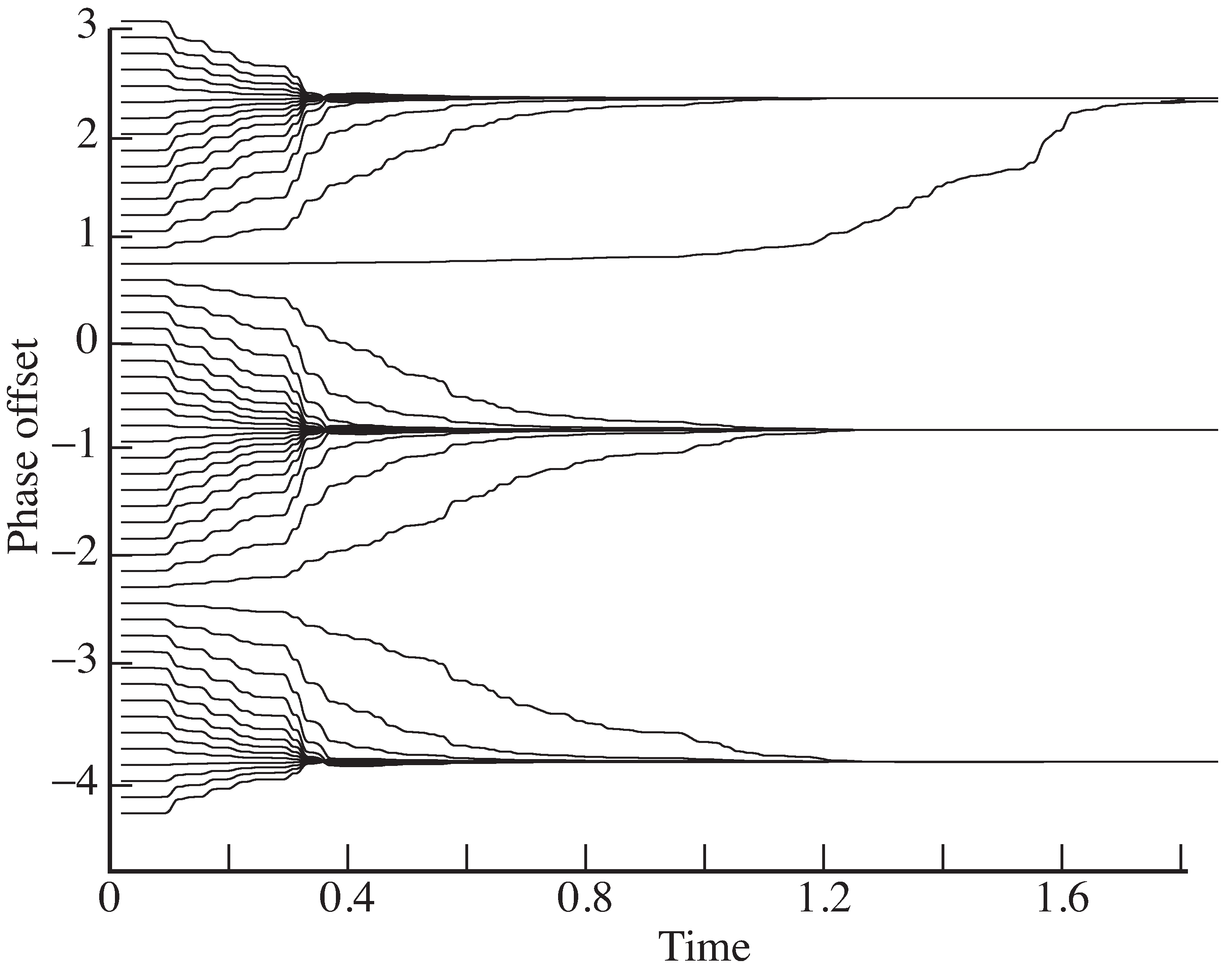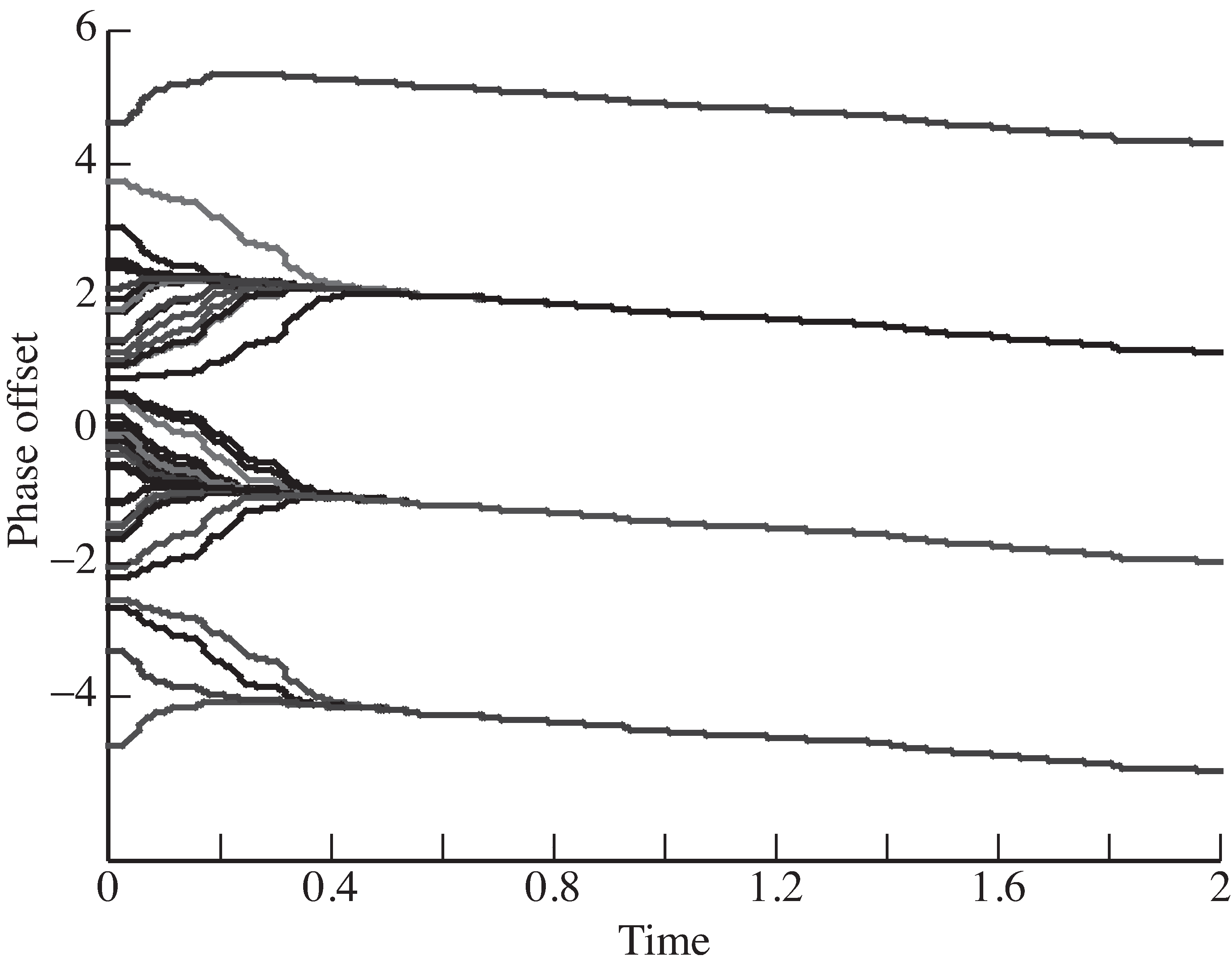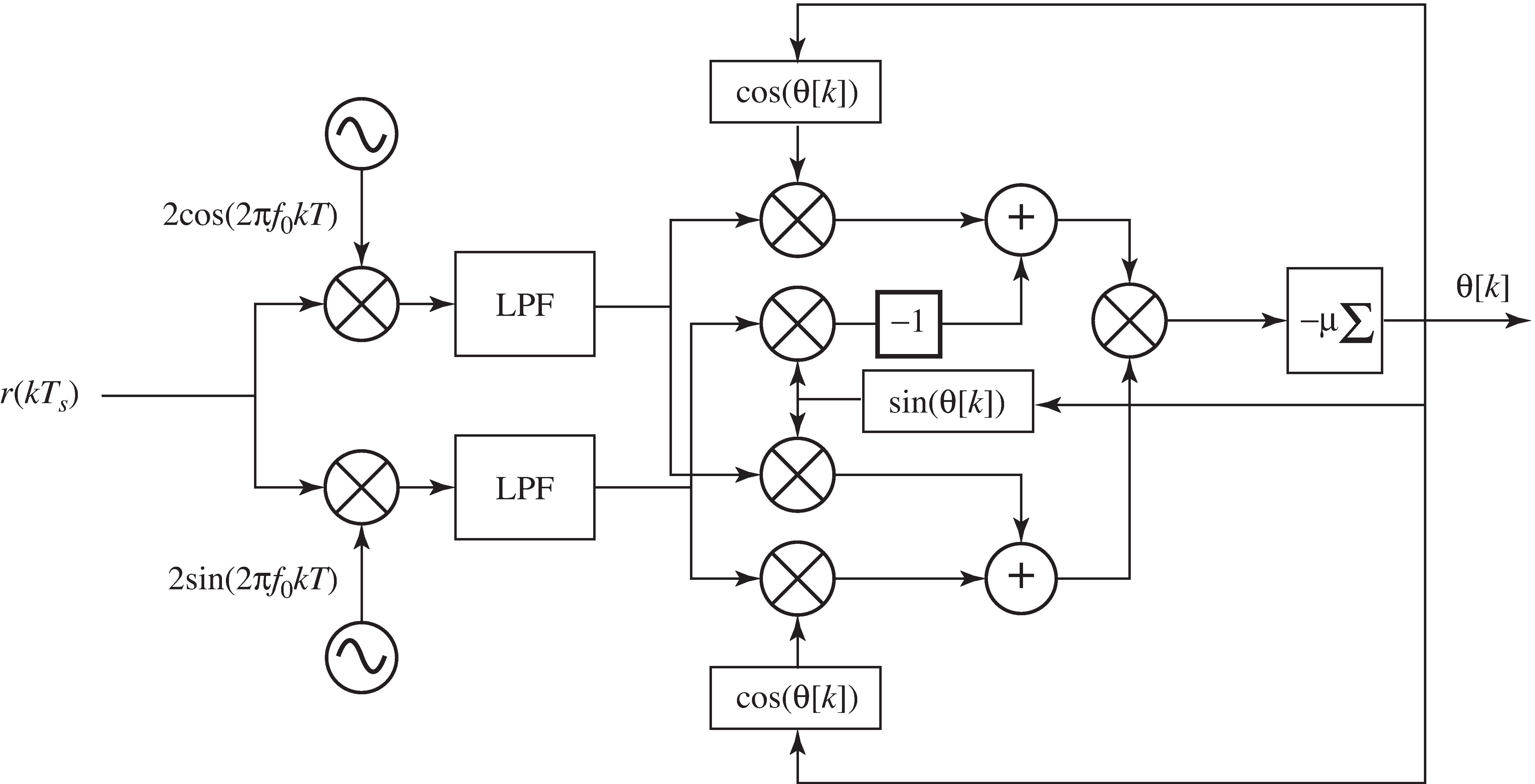| << Chapter < Page | Chapter >> Page > |
Use the preceding code to “play with” the Costas loop algorithm.
mu affect the convergence
rate?mu is too large (say
mu=1 )?

How does the filter
h influence the performance of the Costas
loop?
fl=1000, 30, 10, 3 .costasloop.m .
How does this affect the convergent values? The trackingperformance?Oscillators that can adjust their phase in response to an input signal are more expensive than free running oscillators. [link] shows an alternative implementation of the Costas loop.
costasloop.m )
to implement this alternative.
TRUE or FALSE: Implementing a Costas loop phase recovery scheme onthe preprocessed version (i.e. squared and narrowly bandpass filtered at twice the carrier frequency)of a received PAM signal results in one and only one local minimum in any window of the adjusted phase.
In some applications, the Costas loop is considered a better solution than the standard PLL because it can be more robust in thepresence of noise.
A method of phase tracking that works only in digital systems exploits the error between the received value and the nearestsymbol. For example, suppose that a is received in a binary system, suggesting that a 1 was transmitted. Then the difference between the and the nearest symbol 1 provides information that can be used to adjust the phase estimate. This method is called decision directed (DD)because the “decisions” (the choice of the nearest allowable symbol) “direct” (or drive) the adaptation.
To see how this works, let be a pulse-shaped signal created from a message in which the symbols are chosenfrom some (finite) alphabet. At the transmitter, is modulated by a carrier at frequency with unknown phase , creating the signal . At the receiver, this signal is demodulated by a sinusoid and then lowpass filtered to create
As shown in Chapter [link] , when the frequencies ( and ) and phases ( and ) are equal, then . In particular, at the sample instants , where the are elements of the alphabet. On the other hand, if , then will not be a member of the alphabet. The difference between what is, and what it should be, can be used to form a performance function and hence a phase tracking algorithm.A quantization function is used to find the nearest element of the symbol alphabet.

Notification Switch
Would you like to follow the 'Software receiver design' conversation and receive update notifications?